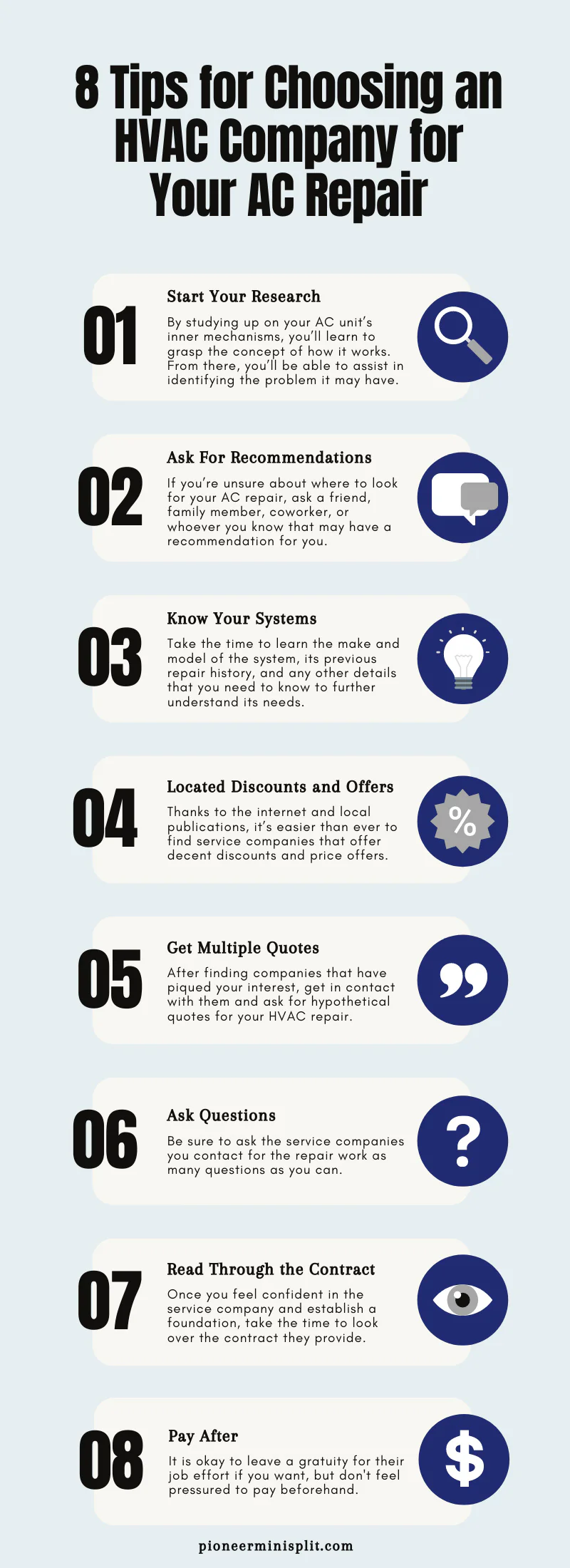5 Simple Techniques For 1 Source Portable Air
5 Simple Techniques For 1 Source Portable Air
Blog Article
The Best Strategy To Use For 1 Source Portable Air
Table of ContentsEverything about 1 Source Portable Air1 Source Portable Air - QuestionsThe 5-Minute Rule for 1 Source Portable AirExamine This Report on 1 Source Portable Air
Although references may seem challenging to track, there are ways to identify them promptly and efficiently. On social media, lots of people break down recommendations about HVAC service technicians that are trustworthy and specialist during an a/c installation, repair service or maintenance task. Additionally, since various other users can make comments, the process of figuring out whether a firm is worth going after is never ever a hassle.

A service that has developed a strong reputation generally has extremely experienced service technicians that completely recognize how to tackle cooling and heating jobs that entail modern-day and vintage tools. Experienced service technicians should always be thought about throughout advanced repair and maintenance jobs because the procedures that educated professionals implement are economical. Another benefit is that experienced air conditioner company specialists never use inappropriate substitute supplies in order to streamline fixing tasks.
Yeah, at NEXGEN Air, we're expert Heating and cooling specialists, but we recognize that not everyone is. This is for true who have never ever had to deal with an A/c issue.
1 Source Portable Air for Beginners
A/c stands for home heating, air flow, and air conditioning. 9 standard parts compose a full central air conditioning and heat system. These components are the furnace, the warm exchanger, the evaporator coil, the condensing system, refrigerant tubes, the thermostat, the ductwork, the vents, and the heatpump. (Don't stress! We'll clarify these components thoroughly even more down the listing.) The heating system is your home heating unit.
There are pros and cons to both, yet we'll cover that in an additional area. You can find your heater hiding in your cellar, garage, or energy storage room. Your heating system's main function is to warm air and relocate right into your ducts to heat your house. (Fun truth: Heating systems are typically mistaken for boilers, yet they're different appliances). Here's a wonderful example of a brand-new Lennox furnace in an utility storage room.

While the heating system pushes hot air right into your air ducts, the warmth exchanger is the one transforming cold air into warm air. One more resident inside the heating system, the evaporator coil soaks up any warm from air passing away over it to blow great air with your vents and into your home. Your condensing device serves a similar objective as your evaporator coil yet you can find the condensing system outside, typically on the side of your house.
Cooling agent tubes link your evaporator coil to your condensing coil. Refrigerant tubes are commonly made of steel and are developed to hold refrigerant and to connect the indoor and exterior units. Your thermostat is that little tool mounted on the wall someplace inside your residence that enables you to control your home's temperature (don't ask us where to locate your thermostat, there's no guideline regarding where they're positioned - they might be anywhere!).
About 1 Source Portable Air
Your heating, air flow and air conditioning (HVAC) system is just one of the most important systems in your home, running silently in the history to handle interior temperature levels. Without heating and cooling, you would certainly be taking care of cold temperatures in the winter and uncontrollable warm in the summer. Cooling and heating systems likewise aerate your home, maintaining the air quality healthy for your family to breathe.
(http://dailycategories.com/directory/listingdisplay.aspx?lid=67510)

Keep reading to learn more regarding choosing the appropriate Heating and cooling system. Choosing the best Cooling and heating system for your home depends on numerous individual factors and choices.
Changing your system with a similar arrangement is most likely one of the most cost-effective choice. Various other considerations include the climate and climate where you live and what gas resources are readily available. If you intend to find out more concerning how a/c systems function in your region, ask neighborhood specialists for guidance for those in the Southeast, picking the best air conditioning system is likely your top priority.
9 Simple Techniques For 1 Source Portable Air
Based on your info, they can assist you make the finest decision for your home. The best type of HVAC system relies on your demands. Although some HVAC systems combine heating and cooling in one package, others run with separate types of tools. Some HVAC systems rely on ductwork, while others are ductless.
Some systems warmth water, while others make use of residual warm in the earth or air to run. The ideal system for you relies on your spending plan and the devices readily available in your area. HVAC systems are regulated by a thermostat, where you can establish and keep track of temperatures. Portable Heater Rental. If you spend in a wise thermostat, you can adjust your heating and cooling system over a phone application and incorporate it with various other wise modern technology around your home.
You don't need a large Air conditioner system to cool down a small home. To find the very best option for you, figure out the square footage of your home and then compare that with dimension charts for the a/c tools. For instance, if you buy an air conditioning unit for a 900-square-foot home, basic standards suggest an unit with about 18,000 British thermal systems (BTUs).
While installing a/c equipment yourself might look like a means to save expenses, any type of problems could produce significant costs in the future. Paying a specialist for their time is well worth getting the work done right. One more cost to think about is upkeep. Consider how much time your new equipment will certainly last and what you can do to expand its durability.
Report this page